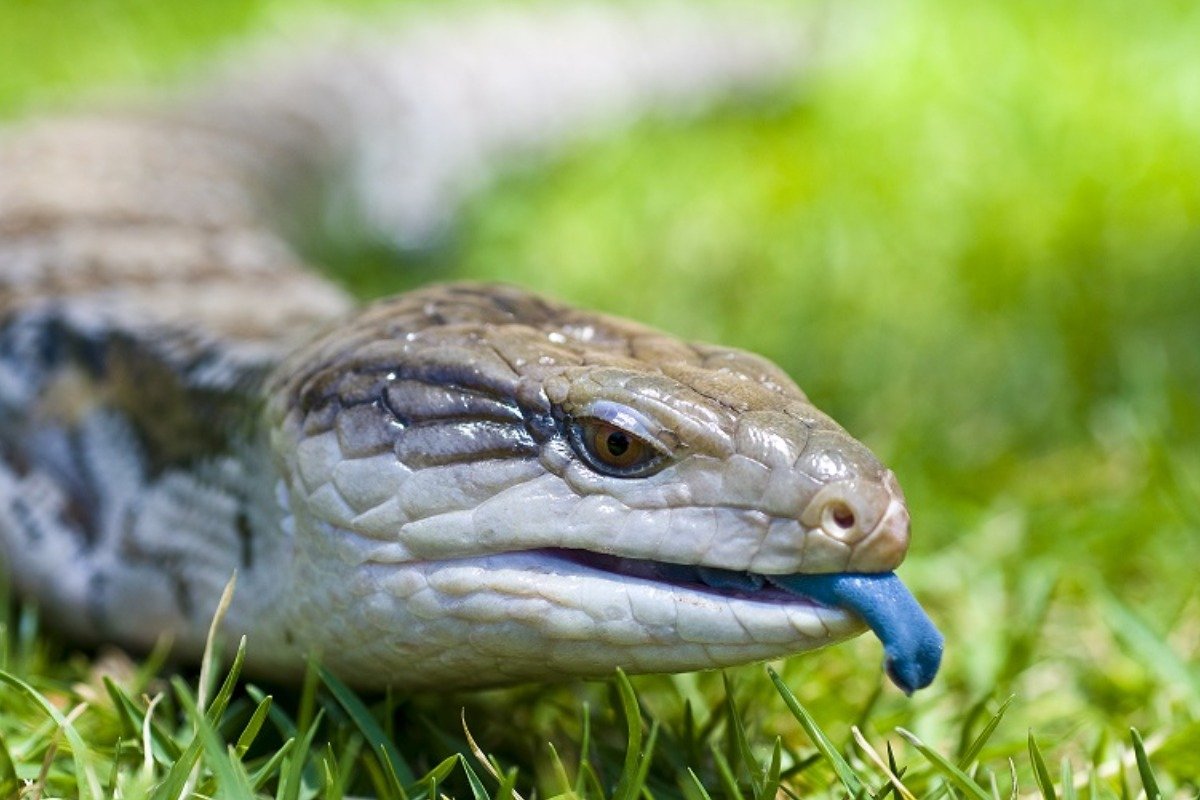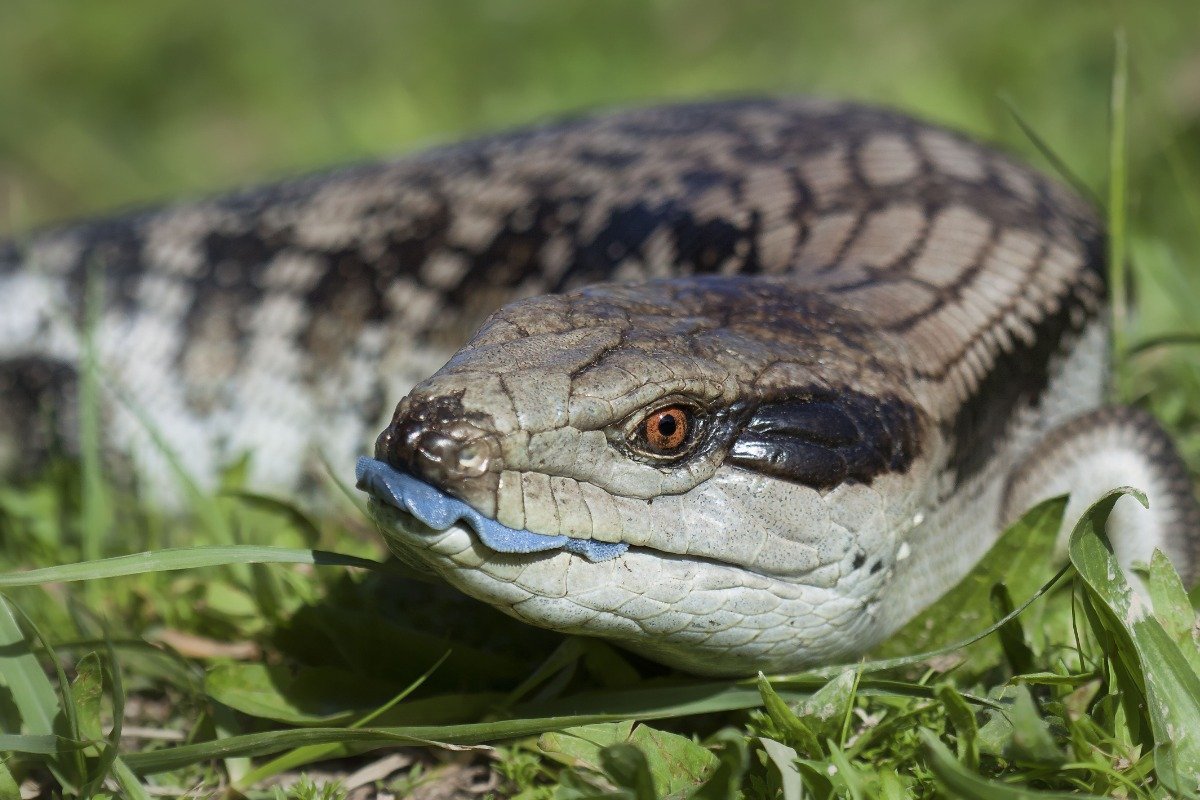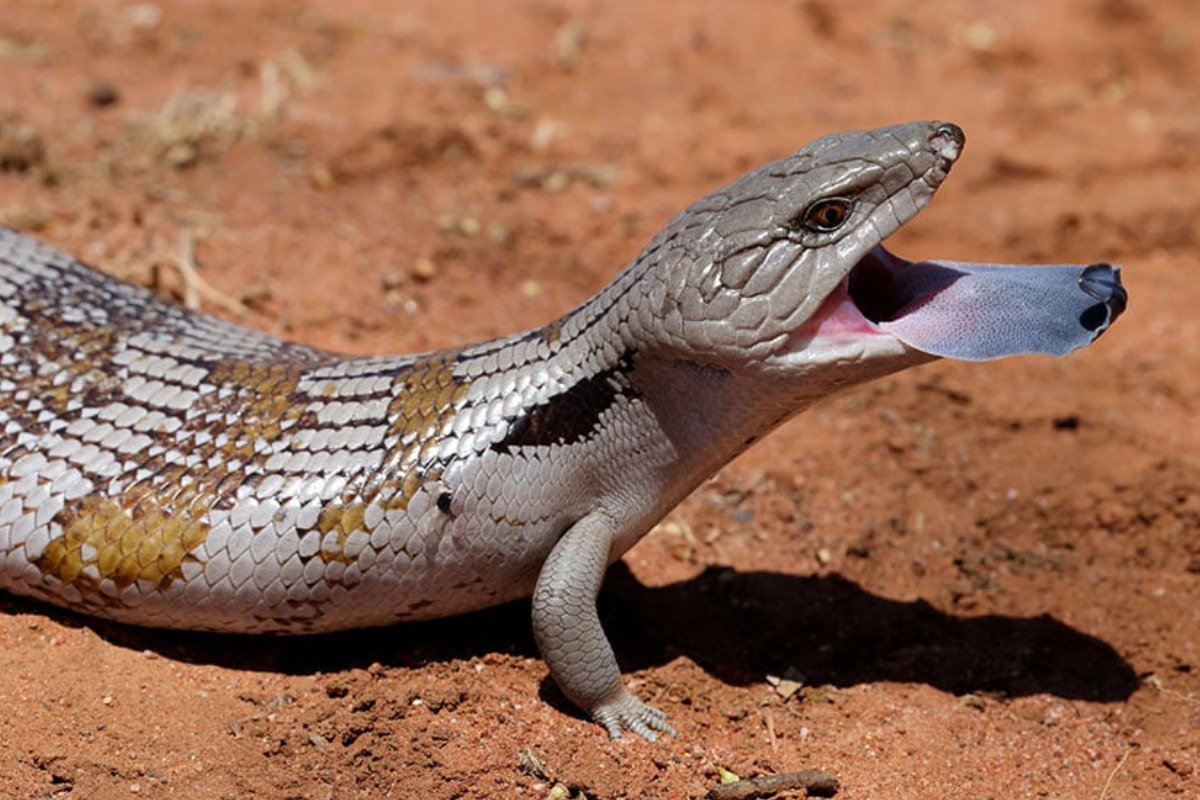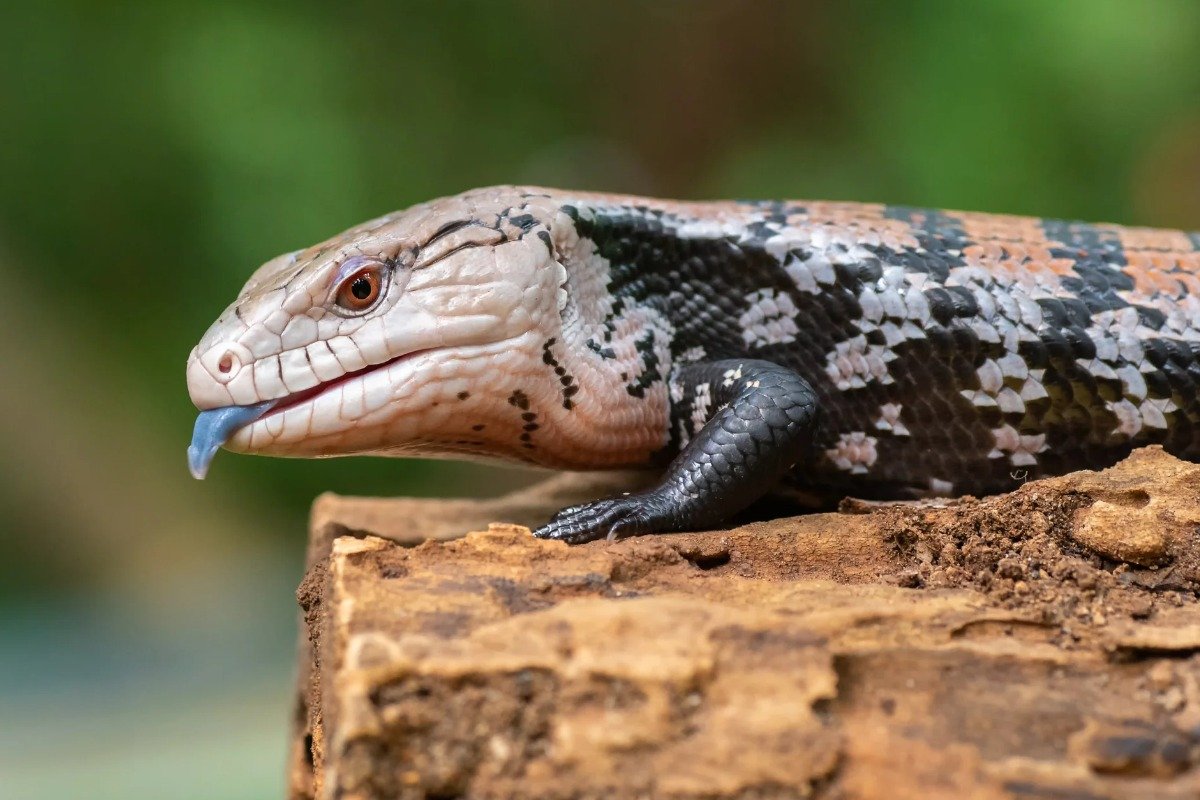Welcome to the ultimate guide designed for blue tongue lizard enthusiasts and pet care novices alike. This comprehensive blog post will help you understand every aspect of caring for your blue tongue lizard. We will delve into the intricacies of habitat setup, including temperature regulation, lighting requirements, and substrate options. The guide will further explore dietary needs, emphasizing nutritional balance and safe food choices. We will also discuss health monitoring, highlighting common ailments and preventive measures to ensure your pet’s well-being. Additionally, the guide will cover behavioral insights, helping you interpret and respond to the unique mannerisms of these fascinating reptiles. By the end of this post, you will be equipped with detailed and practical knowledge, empowering you to provide optimal care for your blue tongue lizard.
What is a blue tongue lizard pet?

The blue tongue lizard, scientifically known as the Tiliqua genus, is a distinctive reptile characterized by its vibrant blue tongue, which contrasts with a typically muted body coloration. These lizards are members of the skink family and are admired for their docile temperament, making them a popular choice for pet owners. Native to regions of Australia and Indonesia, blue tongue lizards are terrestrial and often grow to a manageable size of 18 to 24 inches in adulthood. They are omnivorous, requiring a balanced diet of both plant matter and animal protein. Their hardy nature, coupled with a relatively low-maintenance care routine, renders them an excellent option for reptile enthusiasts seeking an engaging and interactive pet.
Understanding the Skink Family
According to my understanding, the skink family, scientifically referred to as the Scincidae family, represents one of the most diverse groups of lizards, encompassing nearly 1,500 species. I found that skinks are primarily characterized by their elongated bodies, short legs, and smooth, shiny scales that offer them a sleek appearance. Most skinks exhibit a preference for warm, dry environments, though some species have adapted to wetter habitats. Their adaptability is further demonstrated in their varied diet; they are generally omnivorous, consuming insects, small invertebrates, fruits, and vegetation depending on species-specific dietary needs. This flexibility in habitat and sustenance contributes to their widespread distribution across continents like Australia, Asia, Africa, and the Americas. Interestingly, some skinks exhibit unique behaviors like tail autotomy—a defense mechanism where they can shed their tail to escape predators. Understanding these attributes of the skink family provides valuable insight into the care and behavioral expectations of the blue tongue lizard, ensuring a well-rounded pet care approach.
Common Species of tongue lizard pets
I’ve discovered that there are several common species favored for pet ownership. The Eastern Blue Tongue Skink (Tiliqua scincoides) is one of the most popular due to its manageable size and ease of care, making it ideal for beginners. Another prevalent species is the Northern Blue Tongue Skink (Tiliqua intermedia), highly regarded for its vibrant coloration and adaptability to different environments. Lastly, the Indonesian Blue Tongue Skink (Tiliqua gigas), prized for its unique patterns and larger size, is a choice among more experienced reptile keepers. These species are known for their docile and interactive nature, which makes them excellent companions for reptile enthusiasts.
Physical Characteristics of Blue Tongue Skinks
Blue tongue skinks exhibit several distinct physical characteristics that are noteworthy for potential pet owners. These reptiles typically feature robust, elongated bodies with short legs and smooth, overlapping scales that contribute to their streamlined appearance. The most striking feature, as implied by their name, is their vivid blue tongue, used as a defense mechanism to deter predators. Adult blue tongue skinks generally range in size from 18 to 24 inches, depending on the species, with an average weight of approximately 300 to 700 grams. They possess a broad, triangular head with a powerful jaw, aiding in their omnivorous diet. Their color patterns can vary widely, often displaying earthy tones like browns, grays, and oranges with distinctive banding or splotches, providing excellent camouflage in their natural habitat. Understanding these physical traits is crucial for recognizing normal health indicators and facilitating appropriate care and enclosure design for these engaging lizards.
How to Set Up a Proper Enclosure for Your Blue Tongue Lizard Pet?

Creating an optimal habitat for your blue tongue lizard is crucial to its health and well-being, necessitating a detailed understanding of its environmental needs. Begin by selecting a spacious tank, ideally measuring at least 40 gallons for an adult, to allow ample movement. Temperature regulation is fundamental; establish a thermal gradient with a basking spot maintained between 90°F and 100°F and a cooler area between 70°F and 80°F. Utilize a combination of heat lamps and thermometers to monitor this environment accurately. UVB lighting is indispensable, mimicking natural sunlight and aiding in calcium metabolism and Vitamin D3 synthesis. For substrate, options such as cypress mulch or aspen shavings are recommended for their absorbency and safety, as well as steering clear of sand or beddings that may cause impaction if ingested. Incorporate hiding spots to offer security and mental stimulation, using items like rock caves or hollow logs. Ensuring humidity levels are around 40-60% is also critical, achievable through regular misting or a moisture-retentive substrate layer. Ultimately, attention to these enclosure specifications will foster a thriving habitat conducive to your lizard’s health and comfort.
Choosing the Right Size Cage
I’ve gathered that selecting the right cage size is essential for your pet’s health and comfort. For an adult blue tongue lizard, a minimum tank size of 40 gallons is recommended to provide ample space for movement and exercise. A larger enclosure is often beneficial, as it allows for the establishment of a more accurate temperature gradient and the addition of enrichment items like hides and branches. It’s critical to ensure that the tank size corresponds to the size of your specific lizard species, as dimensions and space needs may vary. By carefully considering the enclosure size and adapting it to your pet’s requirements, I can significantly enhance the lizard’s quality of life and overall well-being in its captive environment.
Best Substrate Options for Skinks
I’ve determined that selecting the appropriate substrate is vital for both health and ease of maintenance. Cypress mulch is consistently recommended for its natural appearance, absorbency, and the fact that it retains moisture effectively, which helps maintain appropriate humidity levels. Aspen shavings are also a favorable choice due to their safety and lower risk of ingestion compared to sand or other particulate substrates, which can cause impaction. It’s important to avoid substrates like cedar, pine, and sand, as they pose health risks, including respiratory issues and digestive blockages. By carefully choosing a suitable substrate, I can provide my skink with a safe, clean, and comfortable living environment.
Maintaining the Right Humidity and Temperature
Maintaining the right humidity and temperature is integral to fostering a healthy environment for these reptiles. To ensure an ideal habitat, I maintain the humidity level between 40-60%, which can be achieved through regular misting or by utilizing a moisture-retentive substrate such as cypress mulch. For temperature regulation, a thermal gradient is essential. I ensure the basking area is kept at 90°F to 100°F, while the cooler zone ranges from 70°F to 80°F. I achieve these temperatures by using a combination of heat lamps and placing thermometers in the enclosure to monitor and adjust as needed. UVB lighting contributes to replicating the natural sunlight cycle, facilitating crucial processes such as calcium metabolism and Vitamin D3 synthesis. By adhering to these technical specifications, I’ve created a stable and comfortable environment for my blue tongue skink.
What Do Blue Tongue Lizard Pets Eat?

Blue tongue lizards tend to be omnivorous, and this helps them grow properly as they have specific dietary requirements. Such requirements include animal protein, vegetables, and fruits, among many others. Lean chicken meat, turkey, and some crickets or mealworms can also be provided to help them gain the necessary proteins. Dandelion greens, squash and collard greens should also be included in their meals as they are rich in fiber. Fruits should not make up a large part of their diet because they are high in sugar. Blue tongue lizards can eat berries or melons, which will have a tad lower percentage of sugar. However, the ratio should be adjusted per the lizard’s or animals’ health and dietary needs at around 50% vegetables, 40% proteins, and 10% fruits; for indoor blue tongue lizards, calcium and multivitamins can also be sprinkled on food, especially due to a lack of natural UVB light exposure. In order for blue tongue lizards to remain healthy, they need to be regularly given a variety of nutrients, proper foods, vitamins, and minerals. Maintaining this diet is crucial and will help immensely in keeping the lizards healthy.
Dietary Requirements of an Omnivore
Although I have focused on blue tongue lizard care information, each of them mentions feeding a blue tongue lizard in a way that will maintain their health. Since a blue tongue lizard is an omnivore, it needs proteins, vegetables, and fruits. I try to incorporate about 50 percent of their diet as vegetables like collard greens and squash, 40 percent proteins, which consist of lean meats and crickets, and a few fruits, which constitute 10 percent and are low in sugar, such as berries. Considering my pet lives in the house with very little exposure to natural sunlight, it is all the more necessary for me to dust their food with calcium and vitamin supplements so that they have all the proteins needed to grow. By ensuring the food I provide is diverse and well-balanced, I am able to cater to their accessible health requirements.
Healthy Food Choices: Dog Food, Crickets, and More
In particular, I have noted that feeding them quality dog food should work fairly well as it offers a good amount of protein that is needed. I select options that are high in meat but quite low in grains to meet the desired standards. Moreover, placing crickets is helpful in certain cases since it would supply protein and also cater for its feeding instincts, thus should be incorporated into the diet from time to time. Apart from that, it is more so necessary to add some other fruits and vegetables in order to achieve variety. I also evaluate the nutrition and source of each food on a regular basis to make sure that it suits the whole diet requirements for a blue tongue lizard and improves the health status of the organism.
Feeding Schedule for Your Pet Blue-Tongued Skink
My research into the care of blue tongue skinks revealed that the feeding of the reptiles could be planned according to their natural feeding habits. From the facts gathered, it was noted that adult blue tongue skinks could be fed two to three times weekly. Infants and juveniles, on the other hand, since they are in the growth stage and have high energy expenditure requirements, should be fed at least four to five times a week. During those days, I use a meal plan that contains around 50% vegetables, % high-quality proteins, such as lean meats or selective dog food, and 10 percent fruits. As a general rule, it is ideal to eat at the same time every day in order to enhance appetite and promote digestion. Specifically, animals can be fed during the day only. In any case, each animal was drenched with vitamin and calcium powders every single time during meal times, considering that they lived indoors. Indeed, this precise schedule is an interaction between the growth stimulus and routine, which would enhance the overall health and life of my blue tongue skink.
How to Care for Your Blue Tongue Lizard Pet?

Creating the necessities for a blue tongue lizard can be relatively simple if the steps are followed correctly. A well-regulated temperature gradient ranging from between 40-60% humidity, basking area from 90-100°F, and the cooler zone from 70-80°F can be achieved with heat lamps and thermometers. This lizard requires sufficient amounts of Vitamin D3 and calcium, which aids in metabolism. Their dietary intake must contain 50% vegetables, including collard greens and squash, 40% proteins like lean meats and insects, and lastly, only 10% lower sugar fruits like berries, and this dusted with vitamin and calcium supplements. Maintain a diet of 2-3 times per week for the adults and around 4-5 times for the younger ones. It is imperative to be consistent with the feeding times and dietary intake of blue tongue lizards as it aids in the growth of the lizard’s body, which adds to the overall health of the lizard.
Daily Care Routines
For the care of my blue tongue lizard, In the morning, the first thing that I do is examine the temperature and humidity inside the enclosure since I have to ensure that the figures fall within the correct ranges, which would be 40-60% humidity and the temperature from 70 to 100 degrees Fahrenheit. This entails using heat lamps and thermometers to regulate and check them. I check the UVB lighting for its effective use as it is one of the key components in exercising calcium metabolism and Vitamin D3 production. Every morning, I scrub and refill the water bowl so that my blue tongue lizard has enough clean water. I adhere to a schedule that dictates when they’re fed according to their age, applying the same principles that I have highlighted before and ensuring they have their proportionate share of the suitable vegetables, proteins, and fruits for every meal. In addition to these, I examine the behavior and condition of the lizard on a day-to-day basis. I hope to detect any physical health or behavioral abnormality. Such an organized schedule gives me much relief as it enables me to help facilitate the well-being of my blue tongue lizard with ease.
Signs of a Healthy Lizard
I was able to find a few key aspects that are sufficient to determine that my blue tongue lizard is indeed healthy. Firstly, the lizard’s skin is smooth and has a bright color, while shedding happens easily and on a regular basis. Furthermore, the lizard demonstrates activity while showing signs of being alert and curious, almost as if it is full of life. I take care of her eyes to ensure there is no discharge and make sure she can breathe unobstructed. Also, being active and having a good appetite is another sign of being healthy, as my lizard is able to eat her meals without fail. In addition, I notice that she excretes the waste on a regular basis and in an ideal form. I maintain these health indicators of my blue tongue lizard using proper nutrition and optimal living conditions, which allows me to keep my lizard healthy and well.
Common Health Issues in Blue Tongue Lizard Pets
Within my four years of keeping blue tongue lizards, I have observed that some health nuances should be paid attention to and would consider that lizard enthusiasts provide advice to seek these sources. One of the prominent issues that arise is metabolic bone disease, which is attributed to a lack of UVB light or a calcium-rich diet. To rectify this for my pet lizard, I ensure that there is constant daily exposure to UVB lights and intermittent meals containing calcium as a regular supplement. It should be noted that respiratory infection is also common in the lizards, but proper humidity management over 40-60% ensures a reduced chance for this to arise. Hence, such measures are strictly followed within the enclosure to maintain proper parameters. Another worrisome fact is parasites; they are easy to diagnose due to irregular bowel movements or, in some cases, reduced appetite. In such circumstances, a fecal examination is conducted alongside ensuring the living environment is clean. Besides shedding, which is a natural phenomenon, it can also cause skin irritation or infection. This is caused by a lack of moisture or humidity in the areas surrounding the skin of the lizard; such parameters can easily be adjusted, allowing for a smooth shedding process. The information that I have provided allows for the parameters and attention required to keep a lizard with blue tongues in check so that it remains healthy.
What is the Average Lifespan of a blue tongue lizard pet?

In captivity, blue tongue lizards can live between 15 to 20 years if they are provided with the right care and maintenance. The achievement of such longevity depends on factors that include adequate diet, provision of a suitable environment, and health preventative measures. The provision of optimal ultraviolet radiation, nutrition with adequate calcium levels, and an appropriately maintained environment are some of the major contributing factors to their longevity. Also, periodic veterinary visits to a qualified reptile veterinarian will guarantee good health and the long life of these amazing reptiles.
Factors Affecting the Lifespan of Your Skink
There are a number of things that have influenced the lifespan of my blue tongue skink. It is evident that some time and effort needs to be made by each and every skink owner; first off, it is vital to keep the conditions constant and as near as possible to the skink’s native geographical location; this helps in preventing any respiratory issues or stress. Then there is nutrition; one must feed a balanced diet with the necessary calcium and vitamins, which promotes proper bone development and skeletal health. UVB light is an important source that helps with calcium absorption while also preventing metabolic bone disease. This is the reason I apply great lighting systems to Skink’s cages. The stress and anxiety of watching over your pet constantly is removed when one opts to go for regular checkups with a certified vet. The vet would be able to take early steps and treat ailments such as parasites or infections. I plan on ensuring that my skink can live a healthy and long life well into the full lifespan of blue tongue skinks.
How to Ensure a Long and Healthy Life for Your Pet
In order to defend my pet blue tongue lizard if it is on the verge of a long and healthy life, First and foremost, atmospheric conditions need to be maintained with a temperature range above 70-100°F and humidity levels not exceeding 40-60%, for this Heavy Duty Thermometers and Hygrometers must be used. It is also crucial to maintain UVA and UVB lights in a balanced manner, as I require my blue tongue lizard to have full light for between 10-12 hours to aid in bone metabolism. For a well-balanced diet for my lizard, I recommend 40 % vegetables, 40 % protein, and 20 % fruits with a combination of calcium and vitamins to maintain their health. In addition, they should also have regular check-ups to detect any health issues and alter the steps in taking care of them accordingly. Therefore, by making sure that I have closely observed the behavior and the physical conditions of my blue tongue lizard and also ascertained that all technical parameters are in place, I can safely state that I am able to extend the life of my blue tongue lizard.
Understanding Blue Tongue Lizard Pet Behavior

Gaining insight into the care of blue tongue lizard pets requires detailed attention to detail in order to be able to care for them as required and ensure their safety. Blue tongue lizards are rather calm in their behavior when healthy and in the right conditions; they can be friendly and want to explore. A blue tongue lizard that is well nourished will, in due time, be able to alternate between basking and hiding, that is, stay in the heat during the day while at the same time being able to go back to cooler temperatures away from the sun when needed. They are ground dwellers and seldom climb, although they are able to walk, scavenge, and burrow if necessary. Another major behavior that should be observed is eating, which is always done with vigor, not only when they are famished but also when they are healthy. Also, in some instances, blue tongue lizards can hiss or show stress by puffing up their bodies when they feel threatened or uncomfortable. These behavioral tendencies will allow pet owners to determine whether their animals are in an environment that supports a long and healthy life and how best to cater to them.
Social Interactions and Habits
Those who have been consulted in reference to the social interactions, as well as the behaviors of my blue tongue lizard, In general, blue tongue lizards are mostly solitary, or in other words, they do not seek or need interaction with other lizards. In reality, though, it is often the case that keeping two blue tongues in one enclosure leads to aggression and fighting over territory. They have set strong routines concerning basking, as well as hiding and foraging. From my studies, I have been able to ascertain that during my studies, they show signs of satisfaction, such as out-of-the-tank explorations, regular basking under heat lamps, and hiding in cooler regions so as to room temperature during various routine times. Thus, any change in the routine, such as decreased exploration and changes in feeding routine, means they are under stress or possibly have a health problem; in such a situation, a review of the existing environmental factors and care measures is done. This way, I would respect and understand their natural aversion towards social contact while at the same time engaging in a detailed analysis of behavior patterns since I have a lizard that has a blue tongue, which means that the lizard will be able to live in an environment that is healthy and natural to its behavioral preferences.
Creating a Stress-Free Environment
As I want my blue tongue lizard to be in a stress-free environment, I ensure the whole setup mimics their native environment by maintaining the temperature between 70 – 100 degrees Fahrenheit and humidity levels 40-60 percent with the aid of sufficient monitoring equipment. Providing sufficient UVB light for a period ranging from ten to twelve hours daily helps in the maintenance of related health issues caused by calcium deficiency. Also, I make sure their habitat is equipped with enough hides and basking spots to avoid overheating and having to stress them out. Their diet, composed of 40% vegetables, 40% protein, and 20% fruits, further enriches their well-being and reduces any stress. I take a proactive approach to maintaining such an enclosure by keeping an eye out for signs of behavioral abnormalities and sending my pet to a vet who adequately understands reptiles. This way, I try to ensure maximum comfort and wellness for my lizard.
Recognizing Signs of Stress in Your Skink
Interpreting my skink’s stress signs requires careful monitoring and careful interpretation of their routines. Stress in skinks can compromise their feeding and activity levels and even affect their hissing levels. My investigation convinced me that the environment is crucial in perpetuating stress. The technical factors that I have assured are because of the enclosures’ temperatures, which should be between 70 and 100 degrees Fahrenheit (21-38 degrees Celsius), and the humidity factors, which should be between 40-60%. Another important factor is the provision of adequate UVB lighting for about 10 to 12 hours a day. If these feeding and activity parameters start to change, it is an indicator that the skinks need to be reviewed. I ensure these conditions are met, and I work in partnership with a veterinarian knowledgeable about reptiles so that tailored conditions reduce stress to the minimum in a healthy and friendly environment for my skink.
References
- Bioactive Lizard Terrarium Kits – Blue Tongue Skink Care Guide
- Blue-Tongued Skink Care Guide | Long Island Birds & Exotic
- Blue-Tongue Skink Care Sheet | Reptiles Magazine
Frequently Asked Questions (FAQ)
Q: What are the essential elements of skin care for blue-tongued skinks?
A: Blue-tongued skinks require a proper habitat that includes a suitable enclosure, a heat source like a basking light, UVB output for their health, and a water dish. It’s important to maintain a temperature gradient with a warm end and a cool end in the enclosure to ensure your skink’s comfort.
Q: How do you ensure your skink is getting the right nutrition?
A: Feed your skin a balanced diet consisting of canned dog food, fresh fruits, and vegetables. Blue-tongued skinks can be fed every 1-2 days. It’s important to provide a varied diet to help your skin get all the necessary nutrients.
Q: What type of blue tongue skink species are most common in the pet trade?
A: The most common type of tongue skink species in the pet trade is the Northern blue-tongued skink, native to Australia. Other popular subspecies include the Eastern and Indonesian skinks.
Q: How can you make sure your skink has a comfortable living environment?
A: To make sure your skink is comfortable, provide a spacious enclosure made of PVC or glass, with adequate hiding spots and a substrate that mimics their natural environment. Regularly cleaning the enclosure and maintaining proper humidity levels is also important.
Q: What is the blue-tongued skink behavior like?
A: Blue-tongued skinks are generally docile and curious, making them great pets. They may exhibit behaviors like burrowing or exploring, especially during the 12 hours of daylight they require. Regular handling can help them become more accustomed to human interaction.
Q: How often should you use a basking light for your skink?
A: Use a basking light for 10-12 hours a day to create a warm end in the habitat. This mimics their natural day-night cycle and provides the necessary heat for digestion and overall health.
Q: Are blue-tongued skinks good pets for beginners?
A: Yes, blue-tongued skinks make great pets for beginners due to their manageable size, calm nature, and relatively simple care requirements. However, it’s essential to research and understand their needs to provide appropriate care for blue-tongued skinks.
Q: What are common dietary items that blue-tongued skinks eat?
A: Blue-tongued skinks eat a variety of foods, including canned dog food, fruits like berries and bananas, and vegetables such as leafy greens and squash. It’s important to offer a balanced diet for optimal health.
Q: How can you help your skin during the shedding process?
A: To help your skin during shedding, ensure the humidity levels in the enclosure are adequate and provide a water dish for them to soak in. You can also gently mist the skink and the enclosure to facilitate a smoother shedding process.
